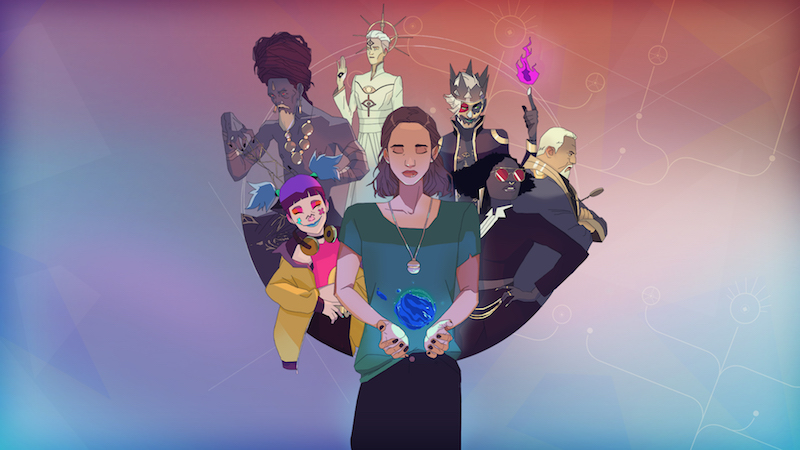Don’t Nod may not be as familiar to gamers as developers and publishers like Activision, Electronic Arts, Ubisoft or CD PROJEKT RED, but it’s one of the more creative ones out there. Whenever the studio announces a new game you know you’re in for something interesting, be it an action/adventure experience, something narrative focused or a game about old-timey vampires. Sure, not all of their projects have been home runs, but that happens when you try new things. Some have been exceptional, too, so it balances out.
The studio that began with Remember Me, then became popular for its choice-based narrative, Life is Strange, is back with another unique, and narrative focused, game. They call it Harmony: The Fall of Reverie, and it’s now available for PlayStation 5, Xbox Series X/S and Nintendo Switch.
Harmony: The Fall of Reverie is a hard game to describe so please bear with me.
At its core, it’s a narrative-focused, choice-based experience in which you play as a woman caught between two realms, including her home of Atina (presumably on Earth) and another connected world called Reverie. Responsible for aiding both, she must use her necklace’s ability to travel between the realms, and act towards improving things in each one. All the while, players must make choices that impact her personal relationships with family, friends and new allies, as well as deal with special beings (Aspirations) who reside in Reverie. This includes versions of Power, Truth, Chaos, Bliss and more, all of whom have their own ways of seeing and wanting things done.
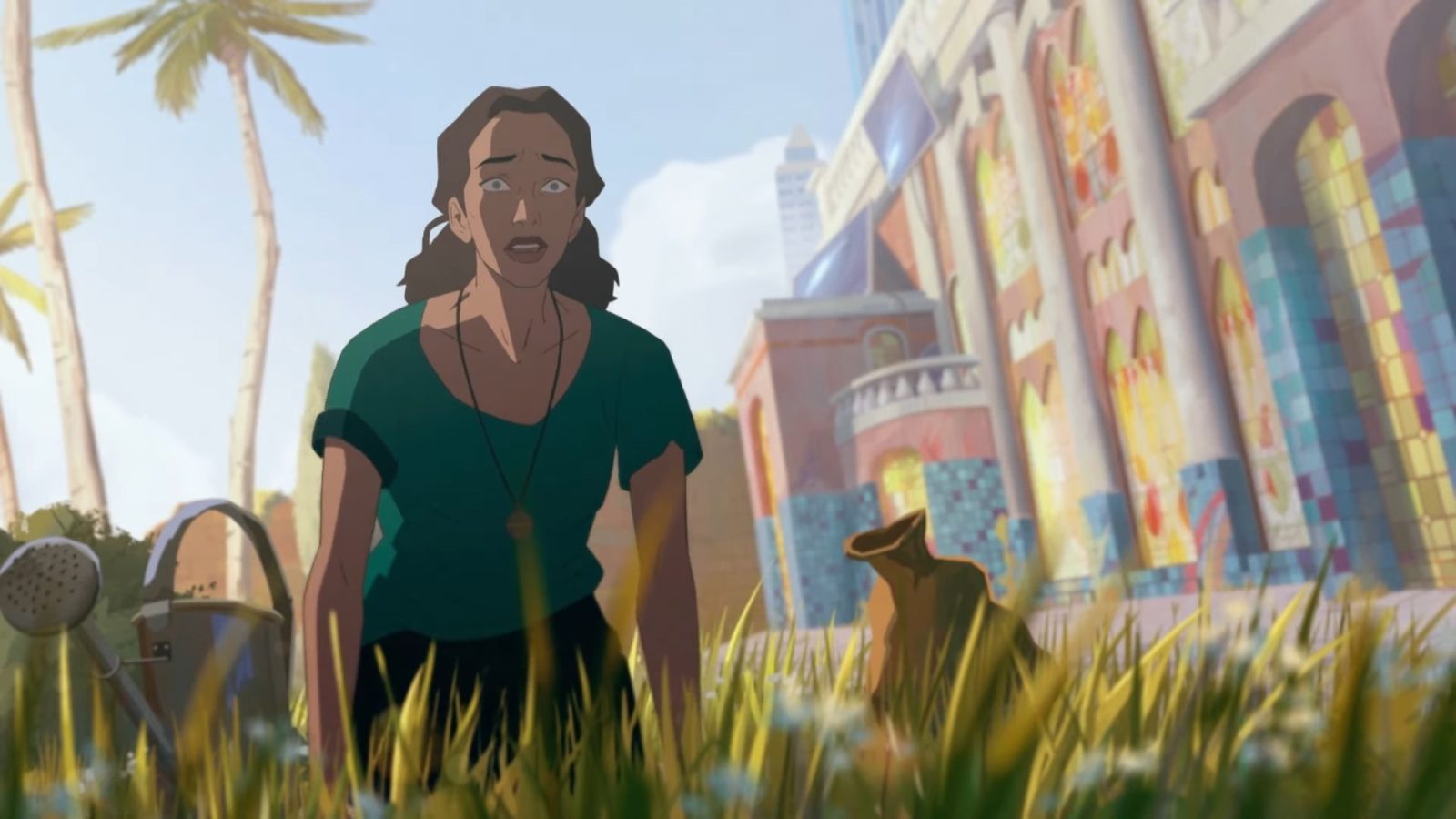
All the while, Atina is being overwhelmed by a tech and retail company called Mono Konzern (MK), which scans civilian’s faces with its drones, pays its workers minimum wage and is seemingly up to no good. This shady organization plays a pretty big role within this game, as do the themes of greed, businesses overreaching, inequality, lack of freedom, and more.
Unlike Tell Me Why, Life is Strange and Twin Mirror, Harmony: The Fall of Reverie isn’t a game that gives its players control of its main character. Instead, everything is handled through a visual novel approach, meaning that your control is limited to making choices and then pressing a button to go through the dialogue that follows. As such, this experience will not be for everyone, and will likely only appeal to a certain type of mature gamer. There’s no action, there’s no movement, and it’s very wordy.
Our main protagonist is named Polly, which is short for Polyhymna, but she’s referred to as Harmony when in Reverie. She begins her story within this game by coming back to her childhood home after several years of being away. Upon doing this, she discovers that her mother — a somewhat popular poet and artsy type — is missing. Thus begins a quest to find her whereabouts, with the help of the mother’s boyfriend, his granddaughter and others.
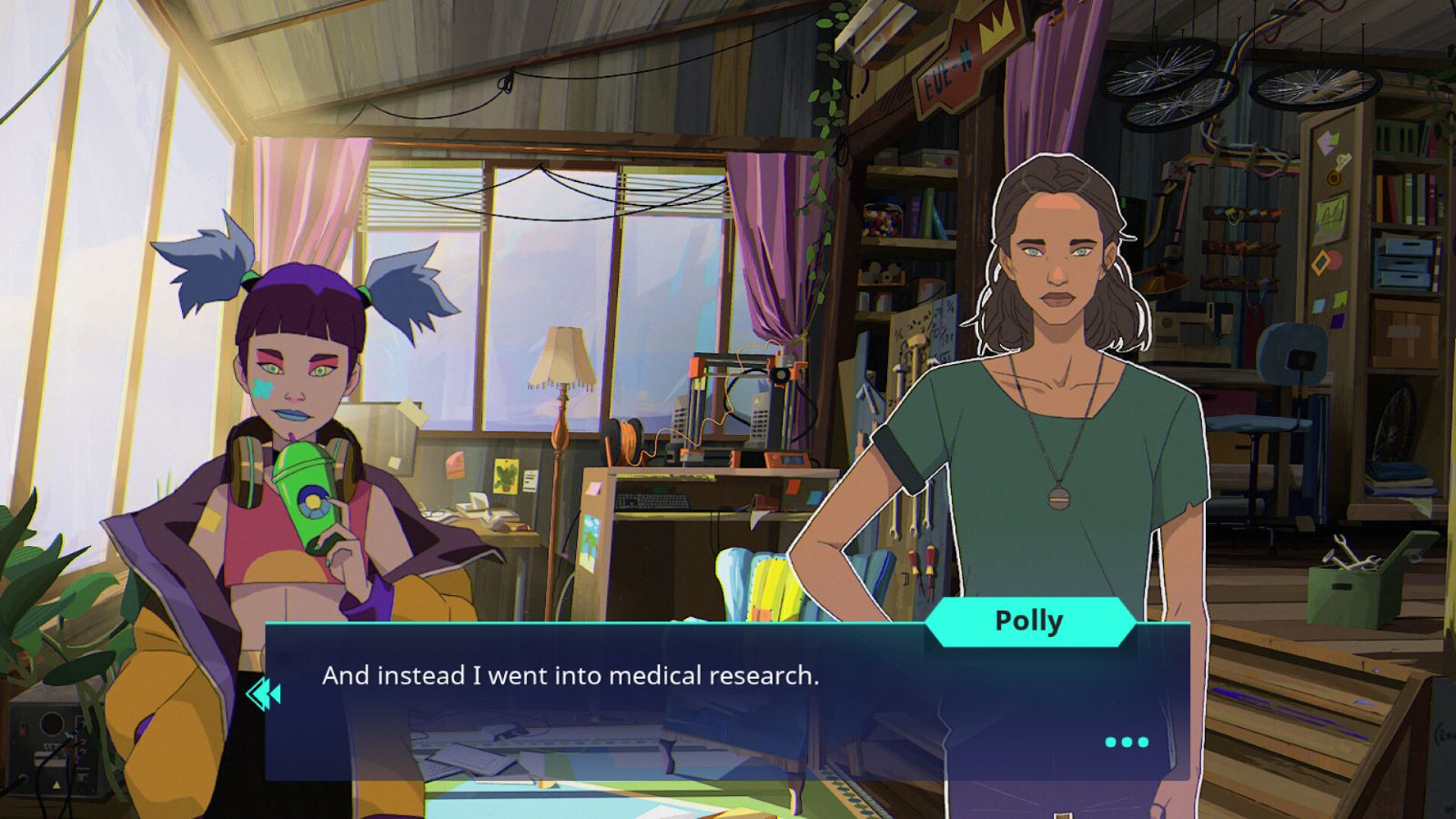
This search is spread throughout Atina, but a lot of the scenes take place within the group’s strange living environment or the boyfriend’s outdoor bar. You see, these folks live in some sort of commune made up of an old recreation centre and additional buildings, with a nice lawn and gardens spread around them. In fact, their kitchen and living area both reside in an empty below ground pool. It, and the rooms that spread off of its deck, act as the game’s home base or main area. That said, you will also spend a good amount of time in Polly’s room, at the local beach, in the nearby skate park or looking at other parts of the region. All of the above are presented as still image backgrounds, though, and the camera simply zooms in or out, or moves along a horizontal plane. The characters — who are also two dimensional drawings, like the backgrounds themselves — simply stand in the foreground and have text boxes appear underneath them.
This is a design that works, and it’s not a new one. A number of other titles have used similar mechanics. The only real problem that I had with it was how repetitive the backgrounds were. There was very little variety to be found, and that kind of detracted from my enjoyment.
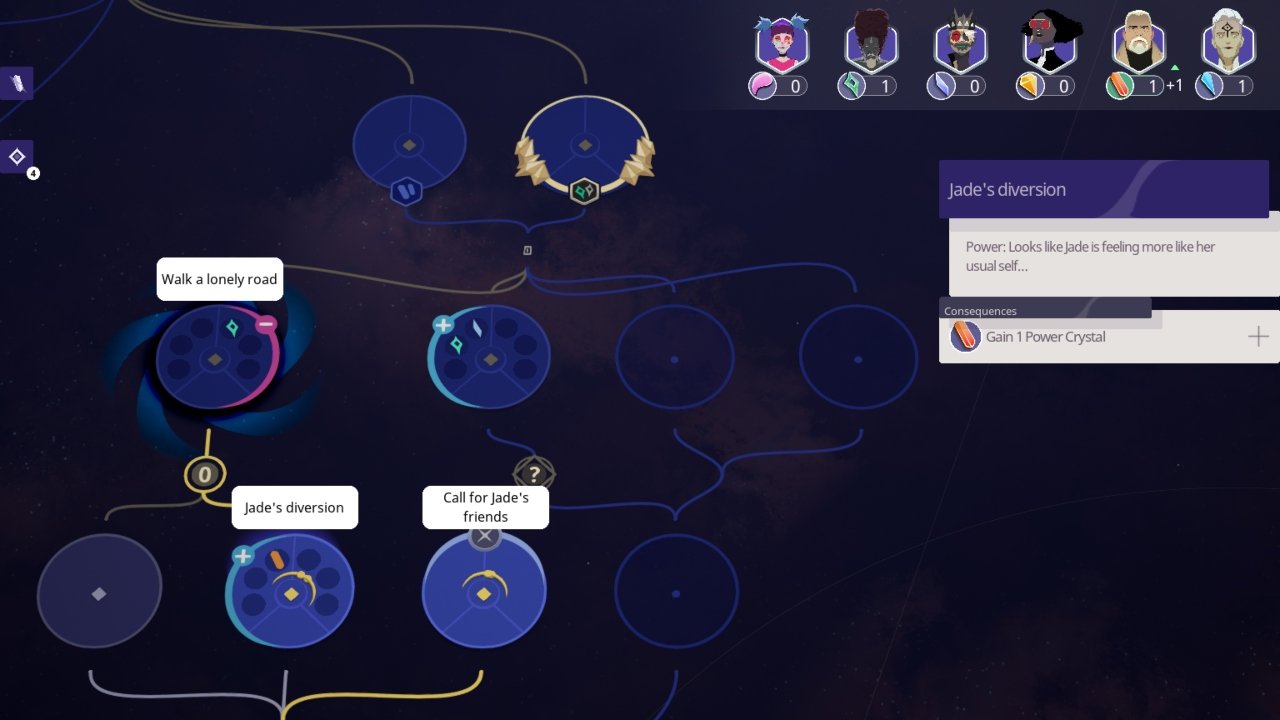
What sets this game and its five-chapter story apart from similar titles is its choice map, which is called the Augural. Laid out over a background that is similar to a starry nighttime skyline, it features many circular nodes that correspond to everything that can happen within Harmony: The Fall of Reverie. It’s there to allow for player choice, and to let the narrative play out as each person chooses. For the most part that goal is met, although it can be frustrating when a big choice comes up and you only have one option available to you, which is what happened to me during one of the last major decisions.
The general idea here is that your choices dictate what comes next, and many nodes will become unavailable to you based on your last or even past decisions. This could mean choosing to side with someone and going with their plan, speaking to Chaos instead of one of the other Aspirations (who help guide and impact human life on Atina), or something of that ilk. Every choice you make matters, and you may not be happy with the results at all times. I know that I wasn’t. Sometimes I felt like I was doing the right thing, and would surely get the outcome I wanted, just for it to not end up playing out that way.
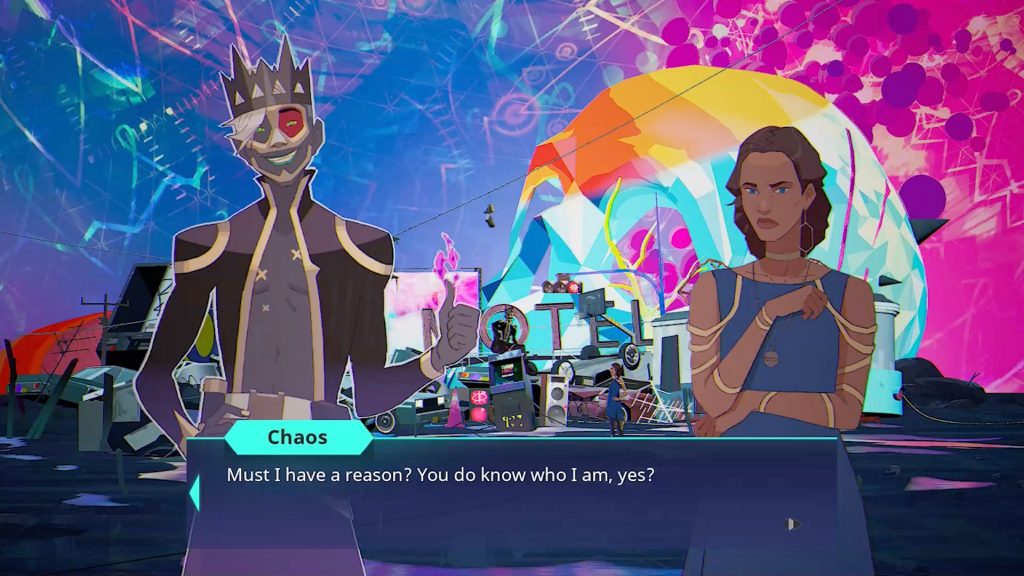
Another thing about this game is the fact that you’ll earn different types of crystals for some of the choices you make. These are tied to Bliss, Truth, Power, etc. and can unlock certain nodes for you. They also factor into each act’s final choice, which often gives you a few different options based on how many crystals you’ve collected. Perhaps you’ve collected 28 of one type and 7 of another, making your decision pretty easy.
Nodes can also be locked, meaning you’ll have to complete others to find a key to unlock them. Keep in mind that this is not a straightforward map. You’ll bounce around it, and will sometimes have to search and squint to see which node is available to you. Unless you zoom in, which I learned to do too late, things can be a bit hard to see.
As you’ve likely guessed, the choices you make are also based around the values that the Aspirations embody. The way you play the game will factor into a radial map, which shows your allegiance (for lack of a better term) to each one. In my play through, I was closest with Bliss and didn’t have much to do with Power. He was often represented by the heavy-handed and more direct choices, which do not align with me as a person or as a gamer. I’m just not confrontational.
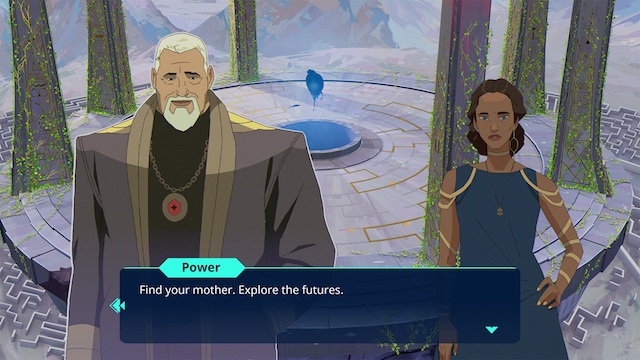
To be honest, I find Harmony: The Fall of Reverie a tough game to score. It took me a while to get into it, and even then I don’t think I cared about the characters and their plight, or their search for Ursula, as much as I was expected to. I picked the choices I would normally make, but the consequences didn’t worry me as much as they normally would’ve either. Still, despite being one of my least liked Don’t Nod games, it ended up being pretty good overall and was certainly not bad by any means. This is a testament to the talent and creativity of the developer, itself.
As mentioned before, this is a visual novel which uses two dimensional backgrounds and characters, both of which are slightly animated. This includes lips that move, and occasional gestures. It all looks fine and performs well, although it’s not exactly taxing the console. Meanwhile, there are rare hand drawn cutscenes, which are reminiscent of cartoons or comics turned into animated TV shows. These are few and far between, though, and usually just appear at the end of an act.
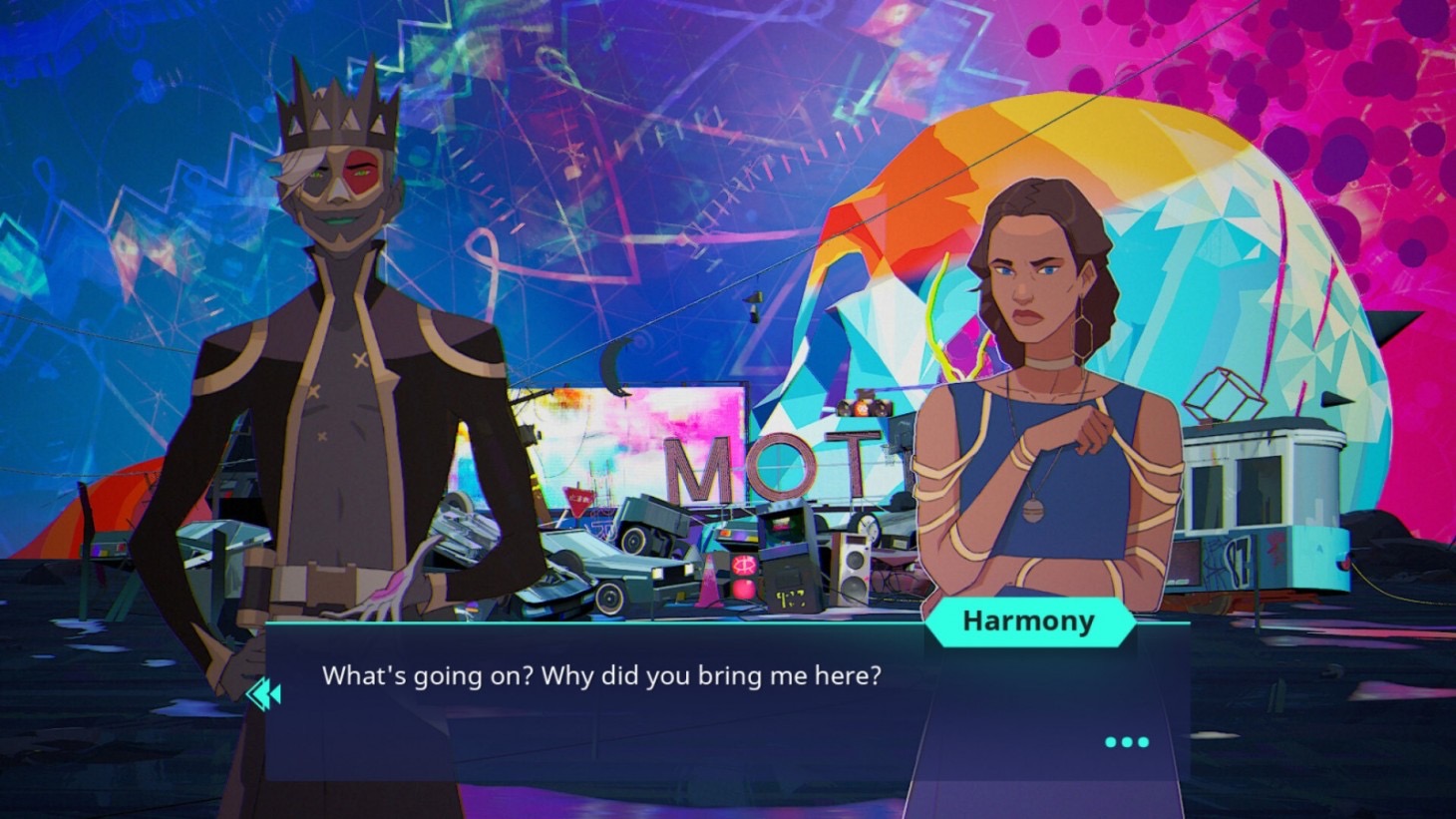
The game is fully voiced, too, meaning that almost every piece of text you read can be listened to as well. The voice acting is actually one of the strongest parts of Harmony, as Don’t Nod didn’t skimp on quality or talent. Each of its characters has a unique voice and personality, which the actors handled very well and really brought to life. That said, I sometimes went through the text quickly, as I was able to read it in little time.
Overall, Harmony: The Fall of Reverie is an interesting, unique and somewhat memorable game, but also a slow, wordy and occasionally frustrating one at the same time. It took a while for me to become invested, and even then I didn’t feel as connected to its characters as I have in other games. Still, I’m glad I requested and played through it, and would recommend it to those who are looking for something different. This is especially true of any visual novel fans, Don’t Nod fans, or those who simply like games where you can make choices that matter. Just know that there are times where the amount of presented choice is a bit of an illusion, because you can become locked into something you didn’t necessarily want to choose based on previous decisions.
This review is based on the Xbox Series S version of the game, which we were provided with.

